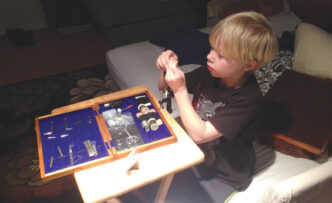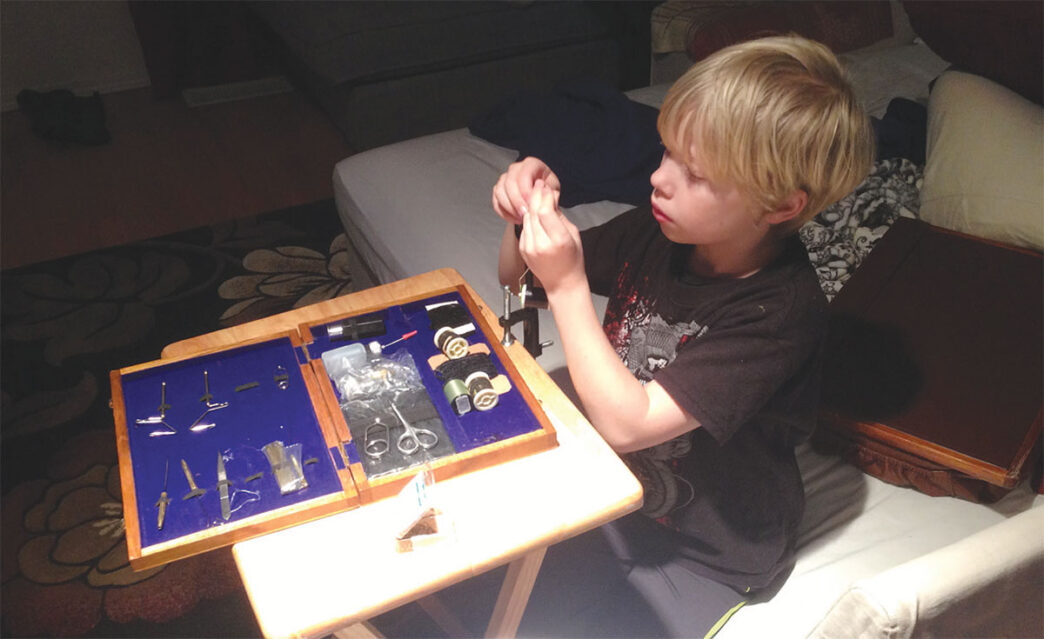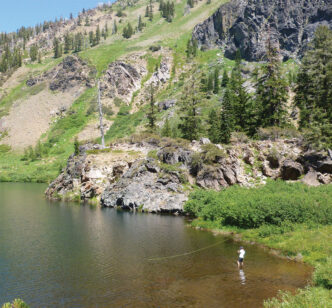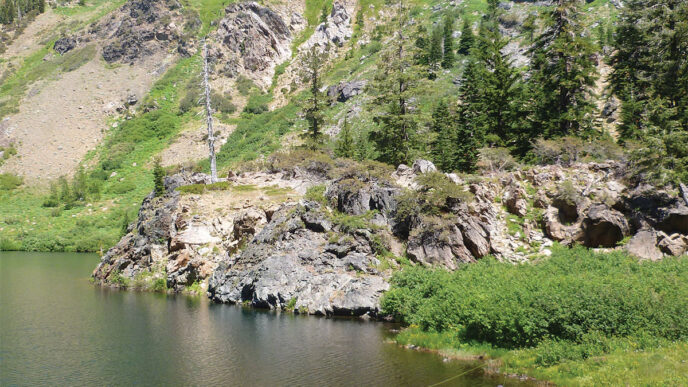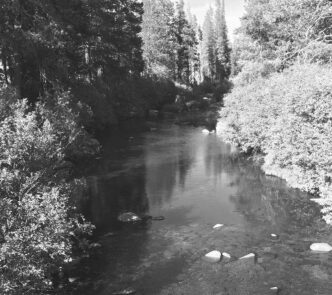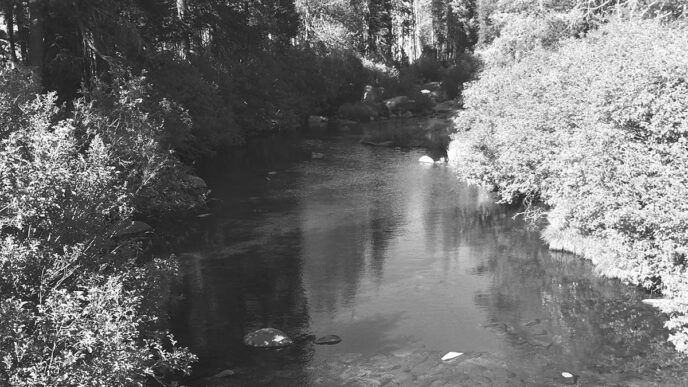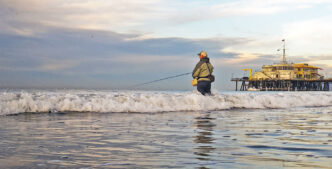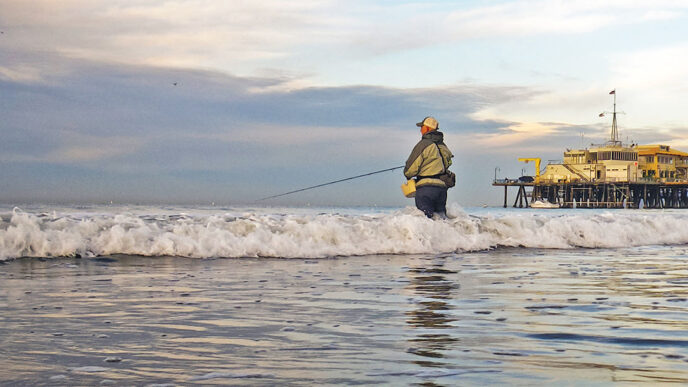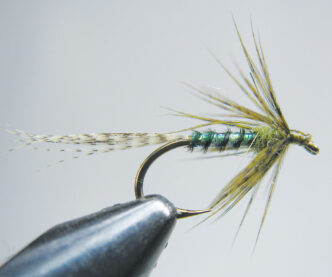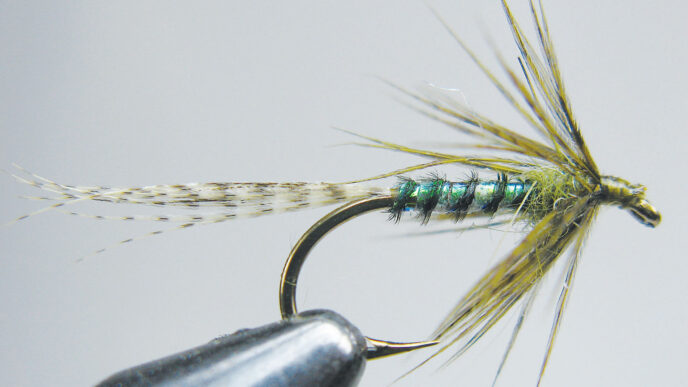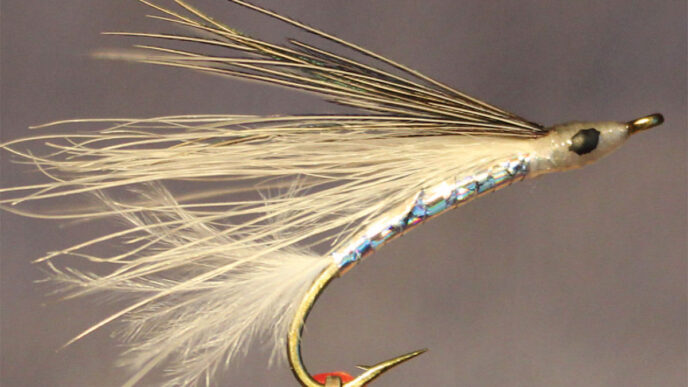In the year I was born, automobiles had been available to the general public for about forty years, and in many regions of the rural United States, the roads were so bad that it was still easier to travel by horse. Television was just coming in, and you had to live near a big city with broadcasting towers to get any reception. For those who did get reception, programs about pioneer outdoorsmen on horseback were among the most popular. Subsistence hunting and fishing were still fairly common in rural areas. The newly spreading urban landscape was populated with grandparents who’d arrived by wagon or clipper ship, and their children, the young parents of the baby boom, were still more connected to an agrarian past than they were the post–World War II oil-fueled culture accelerating through the Jet Age 1950s and into the Space Age 1960s. Kids played outside. When we misbehaved, we were kept inside as a form of punishment. We roamed the parks and neighborhoods, the nearby woods, ponds, and streams. The outdoors was considered the province of independence and a very desirable place to be.
Most boys where I grew up fished. (Sadly, funny ideas about gender roles prevailed in those days, and girls, though not entirely left out, weren’t generally encouraged). They fished, even if it was only on Opening Day of fishing season. Everybody fished on Opening Day, which was right up there with Christmas in popularity.
But those were different times. The population of the United State has almost tripled since the year I was born. Urban sprawl has taken much of the woodland in which we used to play. Per capita, fewer of us fish, and those who do increasingly come to it at an age somewhat beyond grade-school years. And that’s probably a good thing, because if fishing were as popular now as it was through the 1950s and 1960s, with our present population, our resources probably wouldn’t hold up to the pressure.
Frankly, I am not a zealous recruiter of new anglers. On the other hand, I love nothing better than to observe a kid learning and putting that knowledge together to achieve a pleasing result. As the father of four sons and the grandfather of a mixed bag of five grandkids, I am constantly involved in the process, and I’ve outlined a loose working method, of sorts. A prospective mentor might ask: What is the best age to start a kid fishing? And I’ve found no firm answer to that question. Generally, from my own experience teaching kids, somewhere between the ages of six and eight seems about the best time to start them, but it depends on the kid. It is a thing that needs to be intuited as you go along. Each case is different.
Indeed, I think it best to not “start” a kid at all, but rather phase the kid into it — “acculturate” the young prospect to it through immersion. Set the scene before engaging in any activity afield. I call this stage “The Pump,” and it may be the most important stage, particularly if your prospect is very young. Of course, this process is far easier to accomplish in rural families, where there might be one or more adult anglers in a child’s life and fishing junk decorating the living room walls, and more difficult in urban families, where there is little in the form of angling memorabilia or even conversation about angling. But that can be remedied, and the fix will do the instructor some good, as well.
Exercise your storytelling talents. Kids, no matter how jaded by the new media, still need and love stories and mythology. That’s a good thing, because all that is worthwhile in tradition is passed down through stories and myth. And remember: it’s okay to stretch the truth with kids, provided it serves a good purpose. Supply your prospect with natural history books aimed at his or her age level, and make sure those books have a lot of cool illustrations of fish. And along with the books, supply outrageous fish stories.
In other words, the act of angling need not be the initial activity. I almost ruined my first son by starting him fishing too early and keeping him out too long. I think it better to foster a curiosity for the outdoors and nature before tackling the mechanics of angling. It is an easy thing to play outdoors with your three-year-old. Pack a lunch or some snacks and go to the beach or lake or stream on a nature expedition. Kids are naturally militaristic and love an official mission, so prepare for the outing with a sense of gravity. Let your young compatriot know that we are going on a special operation, and appoint each trooper involved a particular job integral to the mission. And of course, you’ll need some weapons. A large aquarium net or pool skimmer is the weapon of choice for these early missions. Kids are born naturalists, and I’ve not met the child yet who doesn’t enjoy catching nymphs, crayfish, frogs, and minnows with a net. Explain that fish eat the little critters and so they make good bait. Keep the trips afield short and fun, and stay only as long as your protégé is energetic and interested — never pressure a kid to stay afield. While you make these trips, talk about angling. Let the child know that to be among the fraternity of anglers is a special thing. Plant seeds. But hold off, at least for a few trips, before putting a rod into the kid’s hands. Let the kid anticipate that.
I was given my first fishing rod, one of my grandfather’s old bamboo fly rods, at the age of four, which I think might be a little too young for most kids these days. I had the advantage of living on a lake heavily populated with bluegills that were easy pickings from the family dock. I’d started handlining at three. I was a lake kid with a lot of fishing mentors living around me. So environmental factors do come into play. And keep in mind that some kids possess more natural adeptness than others.
There is very little I remember from my fourth year, yet receiving my first rod was a rite of passage that I remember vividly. I see a lot of young kids receiving cheap “Snoopy” poles with pushbutton reels as their first rod — and you’ll often see the thing in the spidery corner of a garage or even tossed into a toy box with a bunch of other plastic toys. This gives me pause to look back and appreciate the wisdom of my grandfather, a halo of cigar smoke around his head, who, when he presented me one of his old bamboo fly rods (which smelled like brook trout and was imbued with the mojo of a hundred streams and ponds) with much gravity, impressed upon me that it was not a toy.
He showed me how to set it up, applying nose grease to the ferrules. He tied a short mono leader with a bait hook to the old silk line, clipped on a bobber, and we headed to the dock. On the way down, he instructed me in the proper way to carry the rod, cautioning me to mind the delicate tip. At the water, he showed me how to cast, peeling some line from the reel, then swinging it out there, the weight of the bobber and doughball-baited hook easily pulling the line through the guides for a cast that was more than sufficient.
When I wasn’t fishing with it, that rod hung in the rack with my dad’s rods, and my folks made sure there was no lapse in the rod’s care. I fished with that old bamboo until I was nine, when it met its sad end, broken over the knee of an irate cop who’d already busted me twice down at the pond for ditching school (and then he ran my bike over for good measure, throwing a massive, but temporary wrench into my action).
So in my opinion, there is nothing better than an old (or new) fly rod as a kid’s first rod. A fly rod is actually more foolproof and much easier to use than the troublesome pushbutton rod decorated with cartoon characters. The fly rod will teach a kid the basics of rod handling — tosses and simple casts. My grandfather and I also trolled with streamer flies a lot, a game that is easy and fun for kids and an effective method on early-season trout lakes, usually providing a lot of action, and it, too, can be a great way to start a kid out. But, in those early years, other than trolling flies, I used my fly rod to fish bait, mostly, and it was through presenting live baits that I learned the nuances of presentation that would serve me well as a fly fisher.
Rigged with a split shot and a hook baited with a garden worm, grasshopper, or caddis larva, a fly rod is the ultimate stream-fishing tool. If your student is squeamish about pinning live critters on the hook, salmon eggs or cheese bait might be a viable alternative, though usually not as effective on wild trout. That said, if you know of a stream or pond where a kid can catch them on flies relatively easily, then fish the fly. But I suggest not playing the purist with kids. Again, keep it fun. Mix it up, using both flies and bait, as you ascertain what the situation justifies. And this will teach your protégé the valuable lesson that a fly is really no different than a bait.
Take it slowly, keep it fun, and you will find yourself at the game in the company of an enthusiastic fishing buddy.
Tips from Readers
Editor’s note: Our previous issue’s editorial, titled “Lighting the Fire,” noted the difficulty I was having in getting my two young nephews interested in fly fishing. At the end of the piece, I asked readers to submit their ideas for how to entice children into a love for our sport. The responses were thoughtful, pragmatic, useful. Here’s a selection.
—Richard Anderson
Getting kids to love what we do isn’t easy, but we need to try harder to get them fired up. One idea is to just take them out for a nature walk, sans the rod. Point out the interesting things along a trout stream such as bugs, birds, plants, etc. Don’t make fishing the main thing unless they profess an interest in fishing. Kids get bored easily, so it has to be fun. Make it a camping trip where no cell service can disrupt their concentration. Bring them along slowly and pique their interest in the outdoors.
RICK PAASKE
Los Olivos
Don’t overcomplicate it — the best way to learn is to do. Just take them. More. And Often. (And when you do, remember to engage them by asking questions about what’s around them and what they are doing.)
SCOTT MACDONALD
Modesto
I think the key is that kids are by nature impatient. The younger they are, the more they don’t like sitting around waiting for fish to bite. Key to holding their interest at a young age is to focus on species such as panfish that provide fast-paced action. We have an abundance of warmwater lakes, ponds, and sloughs throughout California that can provide opportunities to get kids into fish.
Do not overwhelm kids with the technical aspects of the sport. Rather, take them to a nearby lake or pond and tie on a panfish popper, and allow them to catch panfish until they get worn out. Even more important, let them do the brunt of the work themselves. Basically, cut them loose and let them learn from their own mistakes. They seem to get a great sense of satisfaction when they catch fish all on their own.
ROB BRUSHIA
Sacramento
I’m an 80-year-old grandfather of five who are in the 7-to-12 age range. I would like to see these kids develop a love of trout fishing before I slip out of their lives to meet my maker. I have found this task frustrating, but I’m still working at it. Here are a few random thoughts.
One of the important keys is that fewer kids grow up in a rural or semi-rural environment, which results in fewer outdoor role models for kids. As we have gotten more urbanized, kids are less likely to go camping and fishing on vacations. But the foremost problem is a general lack of interest in and love for natural beauty. Until young people are taken to places where they can develop an appreciation of clear streams and lakes in beautiful surroundings, it will be difficult for them to become avid trout fishers. More and more families now take their vacations at resorts in Hawaii, Europe, and the Caribbean. The idea of vacationing on a High Sierra pack trip or in a cabin on a Sierra lake is looked down upon by many parents.
JACK HELMS
Moraga
The single most important thing is catching fish, and size doesn’t matter much — quantity and action are the most important things. The NF Yuba above Downieville, beaver ponds above Red Lake, and parts of the WF Carson all come to mind. The other thing is to see it through their eyes. I remember spending several hours catching garter snakes along the Little Truckee below Stampede with a 10-year-old. My intent was to fish, but he was much more fascinated with the snakes and hoppers. I realized it wasn’t a disinterest in fishing on his part, but rather a deepening joy in everything about the natural world.
I guess I’d recommend letting them set the agenda, and simply guide them to their own discoveries, rather than trying to push. Enjoy the journey, and maybe become a 10-year-old again yourself.
Oh, and drifting a worm on an ultralight spinning rod is more fun than we remember… just saying.
WAYNE CHUBB
Fair Oaks
Laughed out loud when I saw your editorial, “Lighting the Fire.” Feather River TU just held our annual Juniors Derby and had our biggest crowd ever. We get the millpond stocked, give away FREE bait and tackle, plus free cocoa and doughnut holes, too!!!! The whole town supports our annual event that commonly brings 200 people and it is a really big deal for us country folk. The best part is walking around the pond the next day and seeing all the kids who make the effort to come back and keep catching.
CINDY NOBLE
Feather River Trout Unlimited
Graeagle



